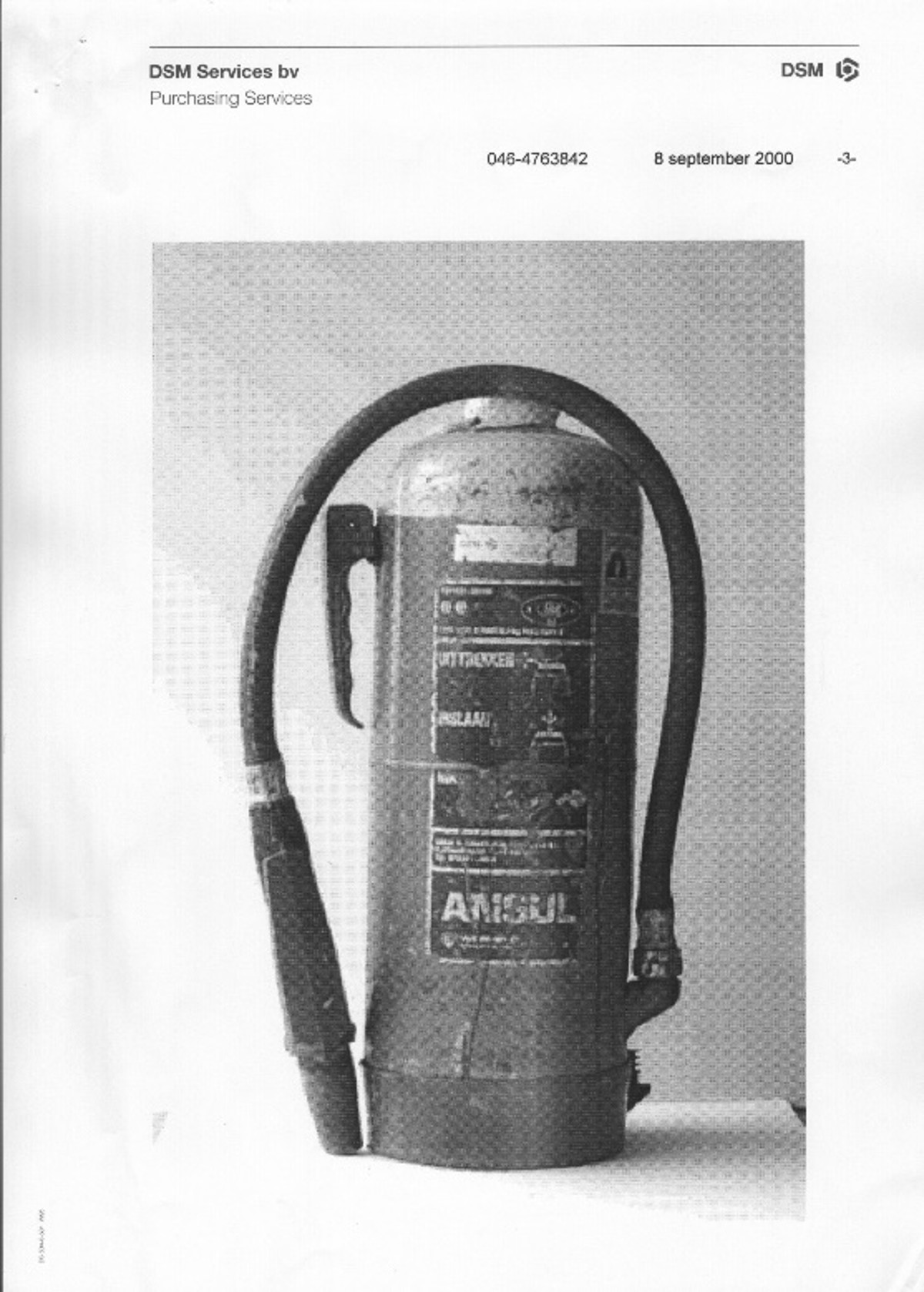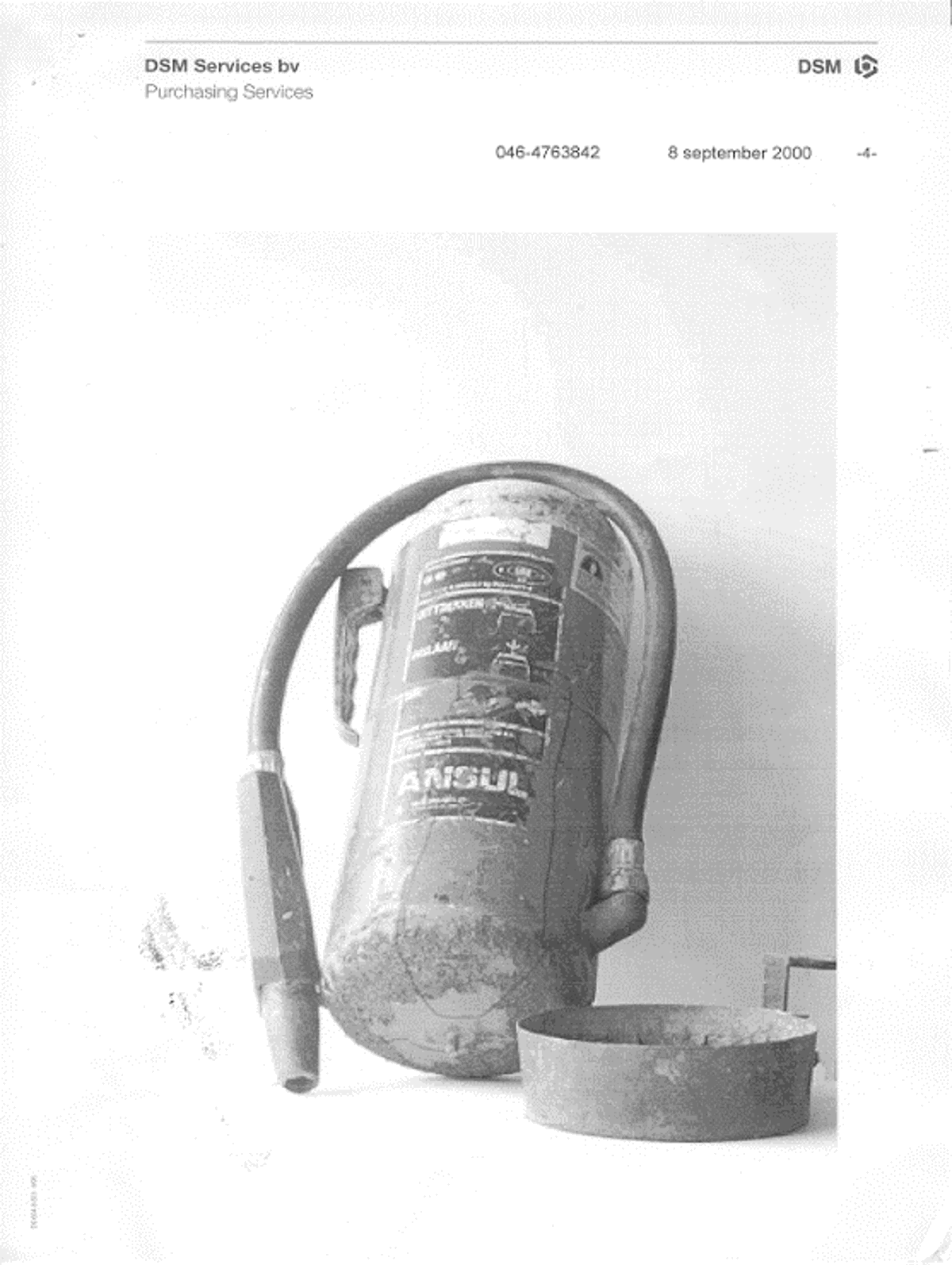Serious fire extinguisher alert
- Safety Flash
- Published on 1 October 2000
- Generated on 30 November 2025
- IMCA SF 06/00
- 1 minute read
Jump to:
We have received a report of a fatality whilst using a fire extinguisher.
What happened?
A worker was using a fire extinguisher to put out a small fire when the extinguisher suddenly exploded, resulting in the person’s death from the flying debris. Part of the extinguisher cracked open when the internal COâ‚‚ cylinder opened (225 psi/17 bar), hitting the user in the chest.
The cause of the incident was corrosion of the cylinder under the rubber protective foot. Water had entered the rubber lining, causing serious corrosion.
We understand that the vendor has distributed a warning to all owners of this type of fire extinguisher stating that the annual inspection should include visual inspection of the bottom of the cylinder after the rubber foot has been removed. Please see the photographs below:
Swipe to see next image
IMCA Safety Flashes summarise key safety matters and incidents, allowing lessons to be more easily learnt for the benefit of the entire offshore industry.
The effectiveness of the IMCA Safety Flash system depends on the industry sharing information and so avoiding repeat incidents. Incidents are classified according to IOGP's Life Saving Rules.
All information is anonymised or sanitised, as appropriate, and warnings for graphic content included where possible.
IMCA makes every effort to ensure both the accuracy and reliability of the information shared, but is not be liable for any guidance and/or recommendation and/or statement herein contained.
The information contained in this document does not fulfil or replace any individual's or Member's legal, regulatory or other duties or obligations in respect of their operations. Individuals and Members remain solely responsible for the safe, lawful and proper conduct of their operations.
Share your safety incidents with IMCA online. Sign-up to receive Safety Flashes straight to your email.

